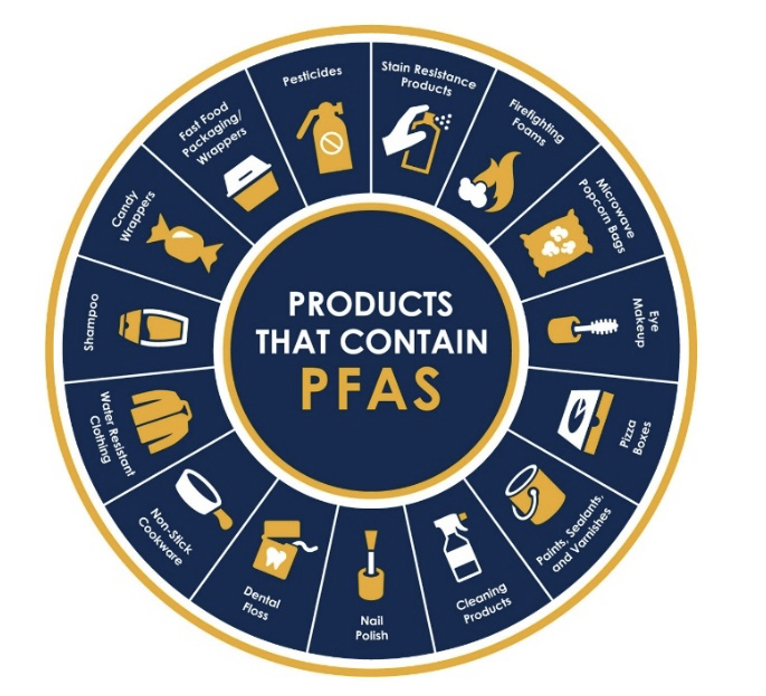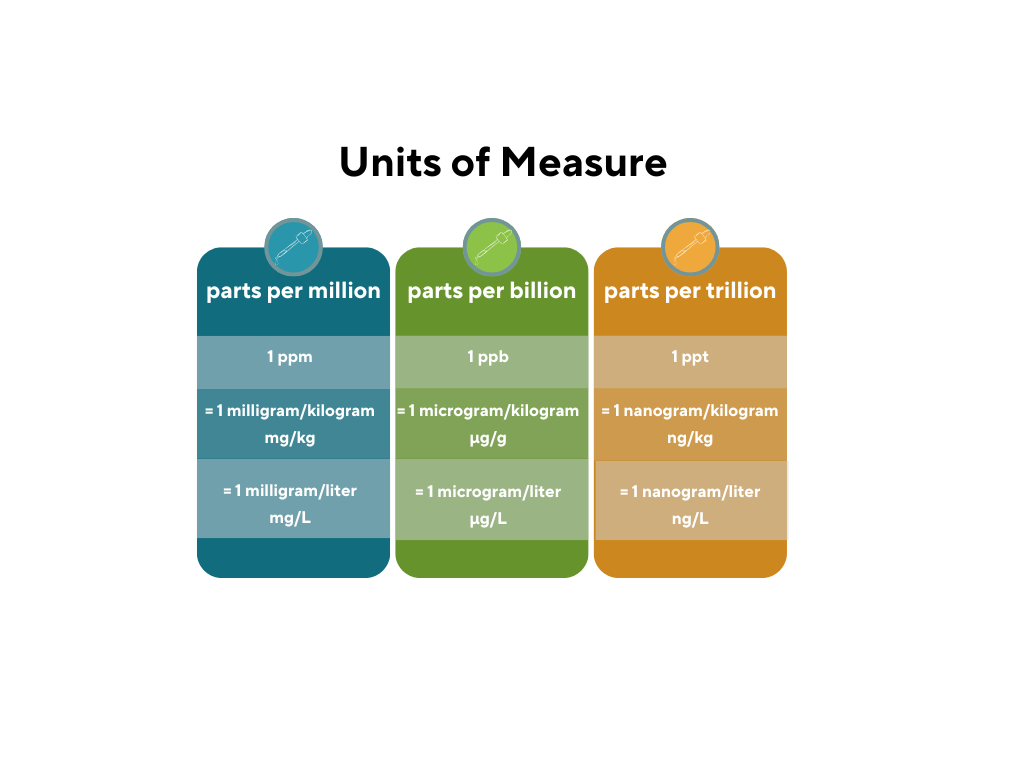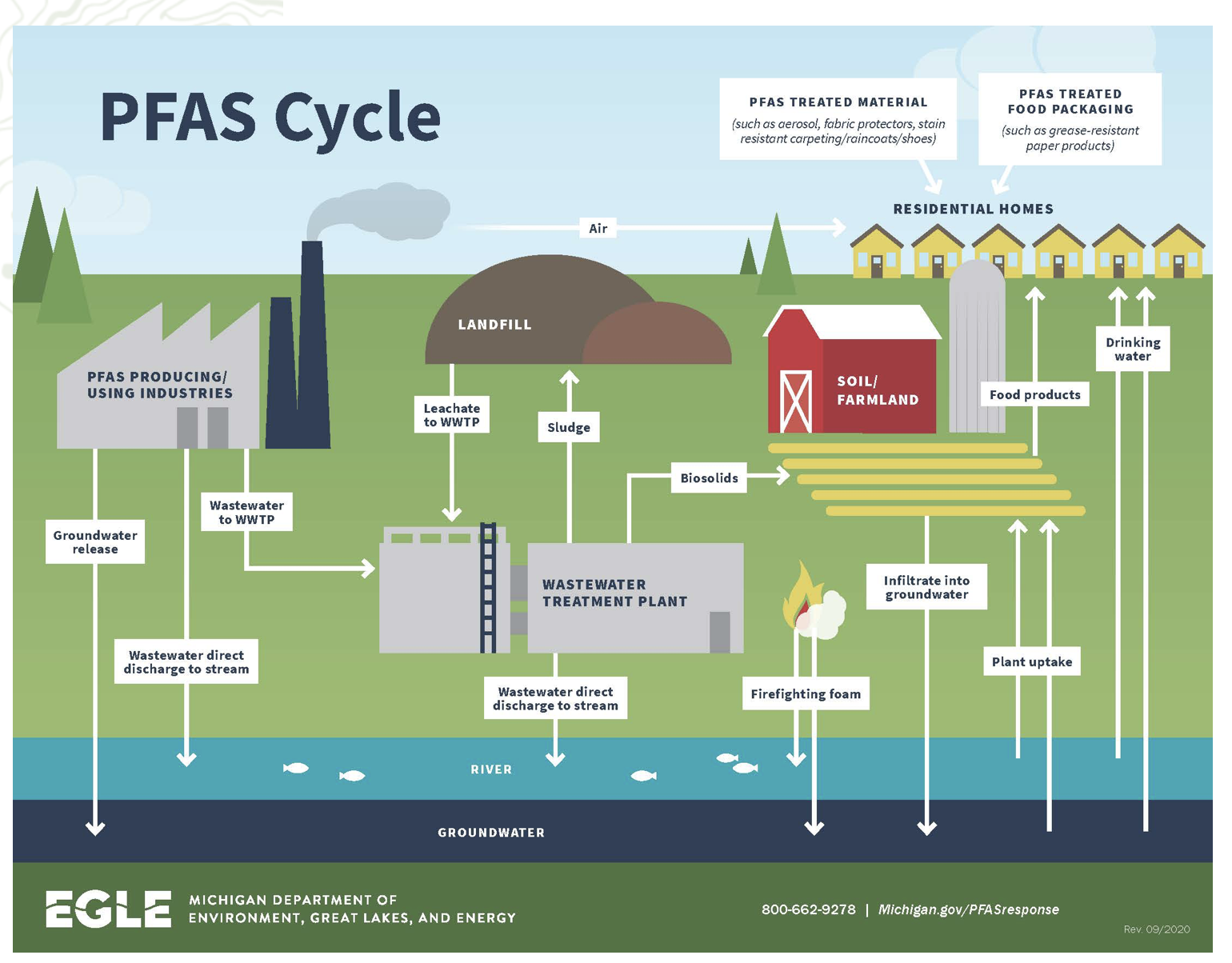What are PFAS?
Per- and polyfluoroalkyl substances (PFAS) are a large group of man-made chemicals that are resistant to heat, water and oil. Since the 1940’s, PFAS have been used in many industrial applications and consumer products such as carpeting, waterproof clothing, grease and waterproof food packaging, cosmetics, fire-fighting foams, and metal plating.

Image credit https://riversideca.gov/press/understanding-pfas
According to the EPA, there are thousands of individual types of PFAS chemicals, not all of which can be detected with current tests. Of the approximately 12,000 chemicals classified as PFAS, the majority of laboratories analyze for the presence of 20-40 of the most prevalent types.
PFAS are still in use today and don’t break down significantly in the environment during an individuals lifetime, but they can move, particularly in flowing water. Some PFAS can build-up in our bodies, which can lead to health risks. Therefore, breathing, drinking or eating food contaminated with PFAS is a concern. Research is still on-going to fully understand the effects that PFAS might have on health. Although more research is needed, some studies in people have shown that certain PFAS may:
- Lower a woman’s chance of getting pregnant
- Increase the chance of high blood pressure in pregnant women
- Increase the chance of thyroid disease
- Increase cholesterol levels
- Change the body’s immune response
- Increase the chance of cancer, especially kidney and testicular cancers
Why has Agriculture been Impacted?
Due to their widespread use and mobility, PFAS migrated into the waste stream from both household use and industrial use. Since the 1980’s, sludge (also referred to as biosolids) from waste treatment facilities has been used in agriculture as a low-cost fertilizer source. This was a beneficial use of nutrients, however farmers were unaware some of the sludge they were spreading contained PFAS. PFAS may have also entered the agricultural sector by unknowingly using irrigation or animal drinking water that was contaminated from industries that heavily used PFAS such as paper mills, tanneries, landfill leachate, airports, or military bases. PFAS have persisted in the soil, been taken up into plants, made their way into animals who eat those plants and have leached into both surface and groundwater.
MSU Extension is here to help producers impacted by PFAS contamination. Please contact Faith Cullens-Nobis at 517-388-1078 or cullensf@msu.edu for a confidential conversation on determining risk and strategies to mitigate PFAS contamination.
It will be helpful to keep in mind the units of measure as we refer to PFAS concentrations throughout the site. 




 Print
Print Email
Email